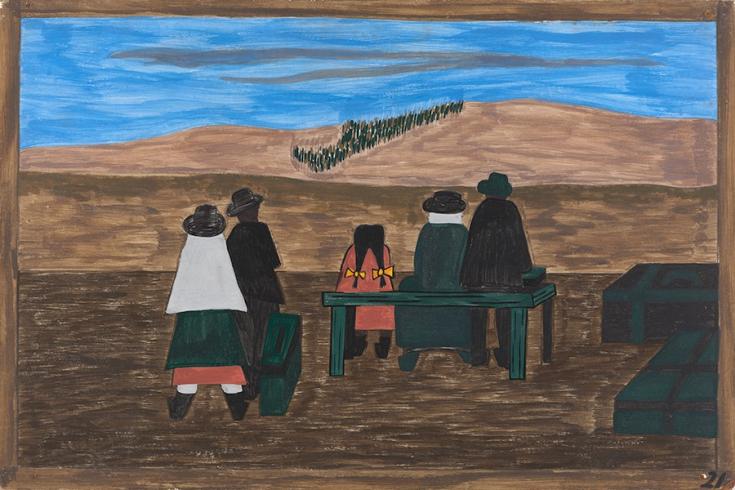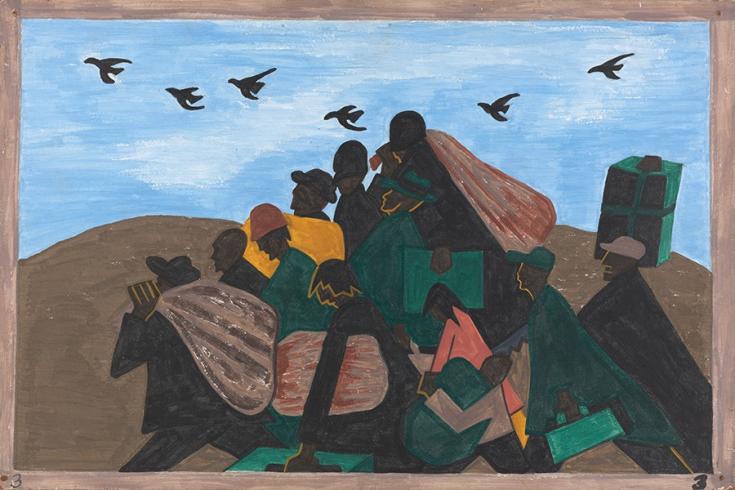

Both Jacob Lawrence and Langston Hughes, a prominent African-American author, captured the African-American and Black experience. Lawrence did so through color, line, and form, whereas Hughes captures the experiences through language. In this lesson, students will:
Introduce:
Analyzing Poetry:
Here are some artwork and images to further contextualize the content of the lesson. You can incorporate the images into your lessons or use them to build your own background knowledge.
Please note: Images are available to download only for personal, noncommercial use. For any questions about image rights and reproductions, please contact imagerights@phillipscollection.org.




Jacob Lawrence created an ambitious 60-panel series that portrays the Great Migration, the flight of over a million African Americans from the rural South to the industrial North following the outbreak of World War I. By Lawrence’s own admission, this was a broad and complex subject to tackle in paint, one never before attempted in the visual arts. The series captures themes of struggle, hope, triumph, and adversity.
Langston Hughes (1902-1967) was a prominent African American author, as well as a contemporary of Jacob Lawrence. Hughes gained recognition during the Harlem Renaissance of the 1920s. In his writings, Hughes focused on the experiences of working-class African Americans in Harlem and addressed contemporary social and political circumstances, such as segregation and urban life.
Hughes and Lawrence were contemporaries and got to know each other at the end of 1947; Hughes’s volume of poetry entitled One-Way Ticket included six drawings by Lawrence, which Hughes personally commissioned. Just as Hughes captured African American experiences through language, Lawrence captured them through color, line, and form.
The Great Migration : In the Southern US, African Americans endured blatant discrimnation and segregation as part of Jim Crow laws, as well as poor economic conditions. In the hopes of improved living and working conditions, hundreds of thousands of African Americans migrated from the South to the North, in particular to Chicago, Los Angeles, Detroit, Philadelphia, and New York. The Great Migration happened in two major waves: the first one being from 1916-1940 and the second one from 1941-1970.
Harlem Renaissance : The largest concentration of African Americans who migrated during the Great Migration moved to Harlem. From the 1910s to mid-1930s, the neighborhood of Harlem in New York City became a hub of African American culture, with an explosion of literature, music, theater, and the arts.
Mood: A feeling created by the artist through their artwork. Mood is often a more general feeling after looking at or studying something for a long time. Emotions are typically temporary. For example, when you first look at a painting, you may feel several emotions—excitement, joy, or happiness. But the longer you study the painting those emotions will fade and a general mood will emerge, such as hope or light-hearted.
Rhythm: A repeated pattern of movement or sound.
Help us improve our lessons by completing this short survey.